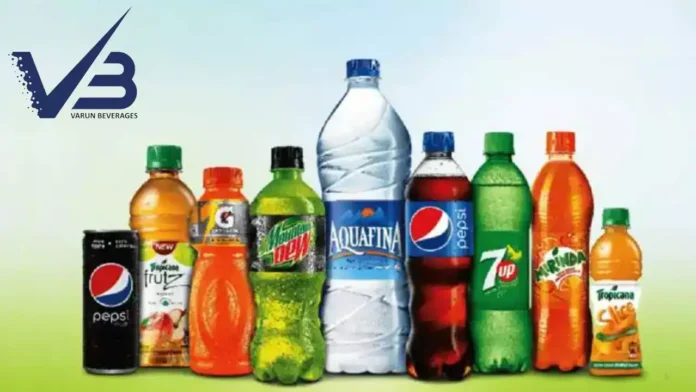Varun Beverages Ltd (VBL), the largest franchise bottler for PepsiCo, reported a 25% rise in consolidated profit after tax to INR 547.98 crore for the first quarter ending March 2024. Following the calendar year (January-December) reporting system, the company had recorded a consolidated profit after tax (PAT) of INR 438.57 crore in the same quarter last year.
The consolidated revenue from operations in the first quarter stood at INR 4,397.98 crore as against INR 3,952.59 crore in the year-ago period.
Total expenses in the quarter amounted to INR 3,609.76 crore, higher than INR 3,329.7 crore in the year-ago period.
Continue Exploring: Varun Beverages completes acquisition of South African bottler BevCo
The company had a fairly solid overall financial and operational performance in the first quarter of the year, according to Varun Beverages Chairman Ravi Jaipuria, despite the Holi festival being postponed by 17 days, which caused a delayed seasonality cycle.
“We attained a consolidated sales revenue growth of 10.9%, comprising a volume growth of 7.2% and net realization per case growth of 3.5% in Q1,” he further explained. “This demonstrates an enhanced product mix in India and increased contributions from international markets.”
In the first quarter of calendar year 2024 (Q1 CY2024), the consolidated sales volume increased by 7.2%, reaching 240.2 million cases compared to 224.1 million cases in the same quarter of calendar year 2023 (Q1 CY2023).
According to the company, it has invested INR 2,800 crore in capital expenditures and has set up three greenfield production facilities for the 2024 calendar year: Supa in Maharashtra on January 25, 2024; Gorakhpur in Uttar Pradesh on April 13, 2024; and Khordha in Odisha on April 30, 2024.
The filing mentioned that the company’s board has given the green light for the establishment of a wholly-owned subsidiary in Zimbabwe. This subsidiary will be dedicated to conducting business in the food products sector.
Continue Exploring: Varun Beverages eyes untapped markets with focus on production capacity and distribution expansion





